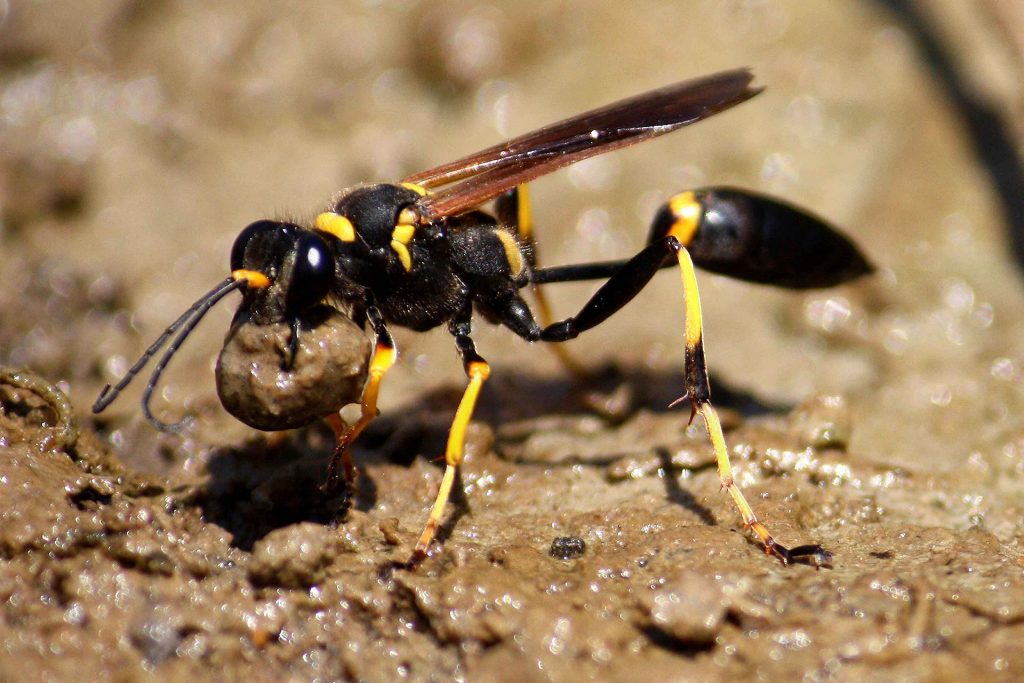| Membership | Price (+HST) |
|---|---|
| Single | $85/year |
| Single Plus | $120/year |
| Family | $130/year |
| Family Plus | $175/year |
| Contributing | $300/year |
| Supporting | $600/year |
| Sustaining | $1,000/year |
| Benefactor's Circle | $2,500/year |
| Director's Circle | $5,000/year |
| President's Circle | $10,000/year |
In Praise of Wasps
By Gabe Comezzi, Education Programs Coordinator, Royal Botanical Gardens.
Few insects evoke sharper reactions among people of all ages as wasps do. After all, while sharing the order Hymenoptera with the European Honey Bee, native wasps share none of the welcome we give bees, and with good reason; certain wasp species sting, they are attracted to our sugary drinks and snacks, and they build nests where we least want them. Despite these, it is undeniable that native wasps provide essential services for our ecosystem, without which we might find ourselves — and the plants we rely upon — overwhelmed by pests. Let us now praise this misunderstood insect.
When we think about wasps, we are most likely thinking of colonial wasps — those species who live socially in large numbers, and who aggressively defend the nests they build. One common native species is the Bald-faced Hornet (a misnamed species since it’s actually a wasp), a large black and cream wasp which builds nests high in trees. Wasp larvae are a sought-after food source for raccoons and other insectivores, so hornet attitudes towards intruders are understandable.

You may be surprised to learn that most species of wasps do not live in colonies; these solitary wasps live alone, building homes out of mud, in cavities in trees, and a variety of other shelters, depending on the species. The Black and Yellow Mud Dauber is a frequent sight at RBG, where it can be seen using mud to build the nesting tubes in which it will lay its eggs. Unlike colonial wasps, solitary wasps are much less aggressive in defending their homes.
How do these insects benefit us? For one, most wasps prey on other insects and arthropods. This means that wasps help to control the population of caterpillars and other leaf-eaters, which feed on the plants we rely on for food and shade. Wasps also hunt biting flies, which are a pest that humans contend with. Black and Yellow Mud Daubers have a particular appetite for spiders; when hunting, the wasp paralyzes its prey, then seals the unlucky spider inside of a clay tube with one of the wasp’s eggs. When the egg hatches, the larva have a meal ready to eat.
Wasps also act as pollinators, benefitting our plants as they spread pollen between flowers. While Bald-faced Hornets prey on insects, they also feed on sources of sugar, including the nectar from flowers. Bees are still the pollination experts — the long hairs on their bodies allow them to carry up to 30 percent of their own weight in pollen — but wasps play an important role as ‘accidental’ pollinators.
Wasps have a crucial function within our ecosystem, and one which directly benefits humans. While not always possible to share space with colonial wasps, solitary wasps like mud daubers pose very little threat, and all species help to keep plants healthy and happy. The next time a visiting wasp takes an interest in your picnic, consider that wasps somewhere may have helped make growing the food you eat a possibility!
More from the RBG Blog
Check out RBG’s blog for announcements, articles, and more from Canada’s largest botanical garden.
Want to be sure you hear first? Sign up for our weekly e-newsletter to hear about upcoming events, weekend activities, articles, and more!












